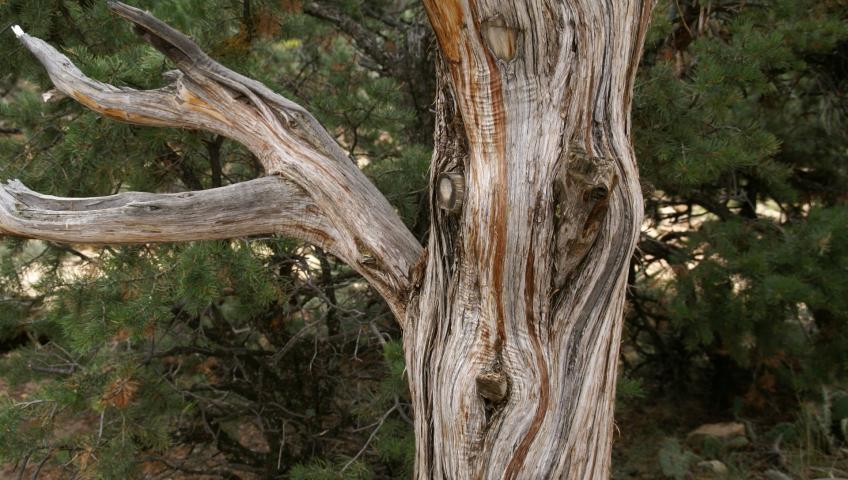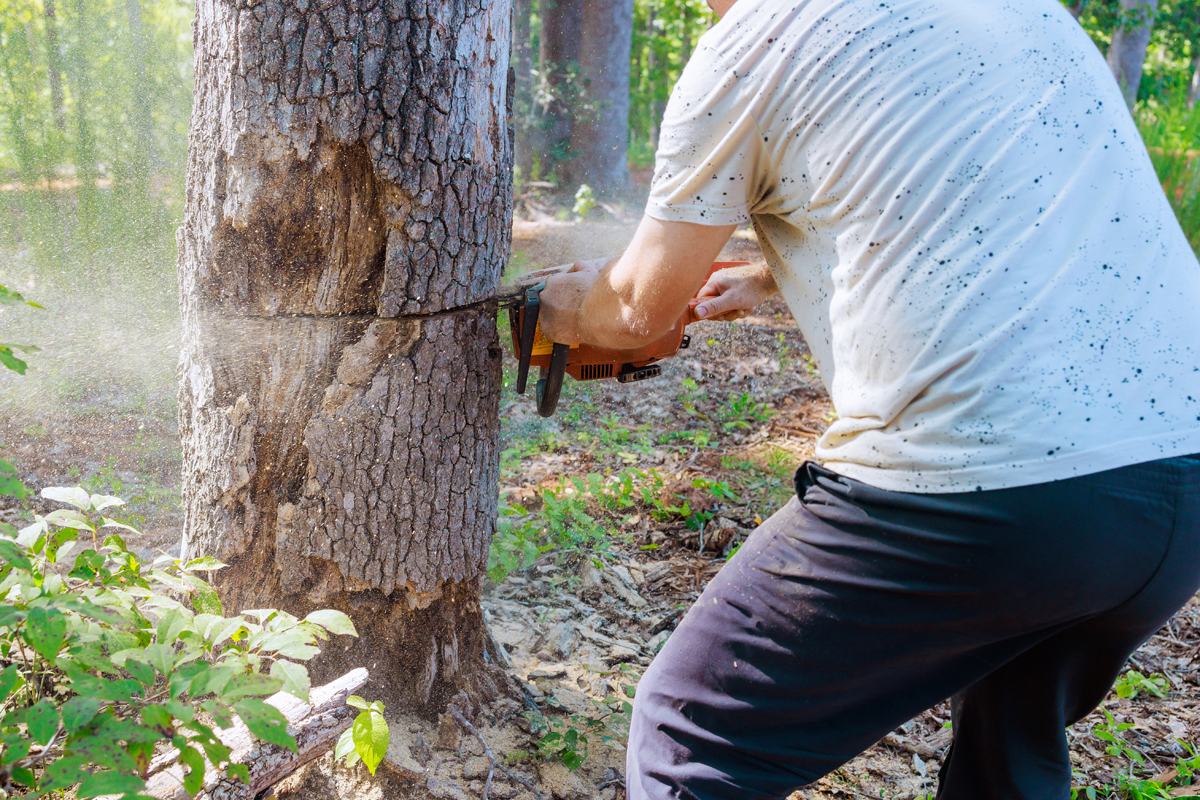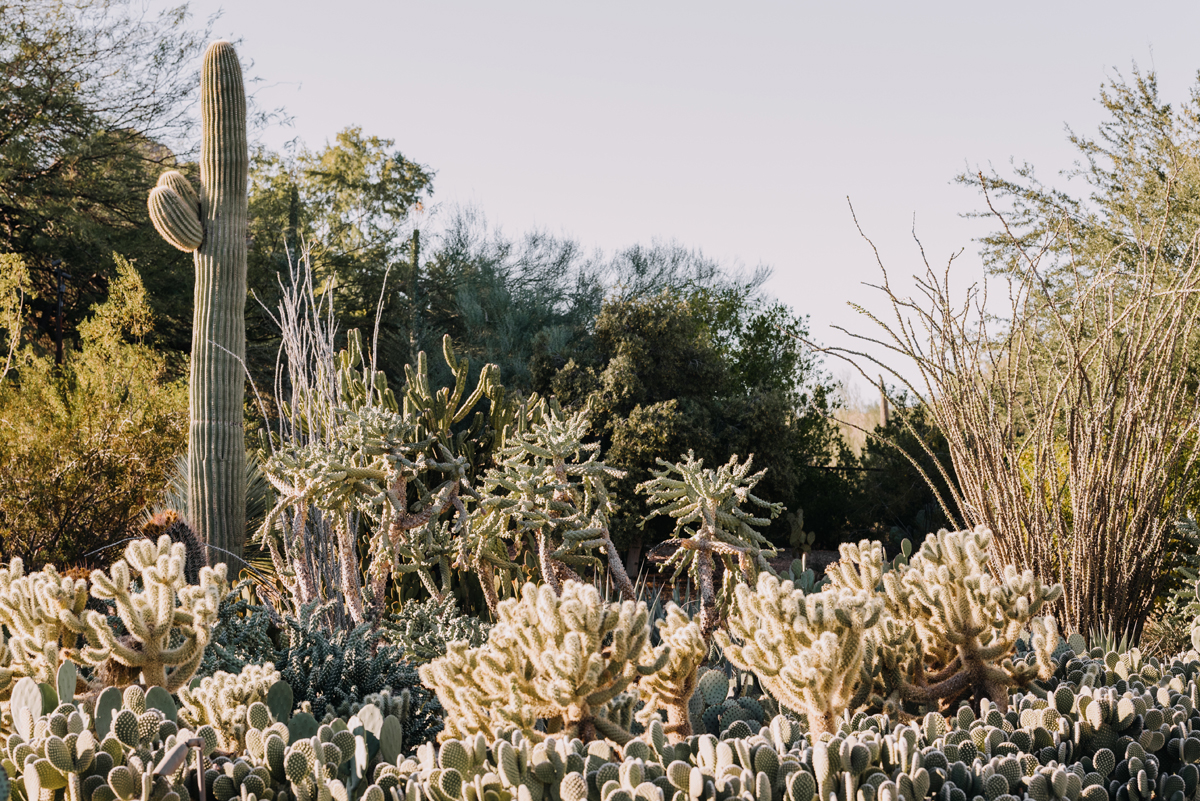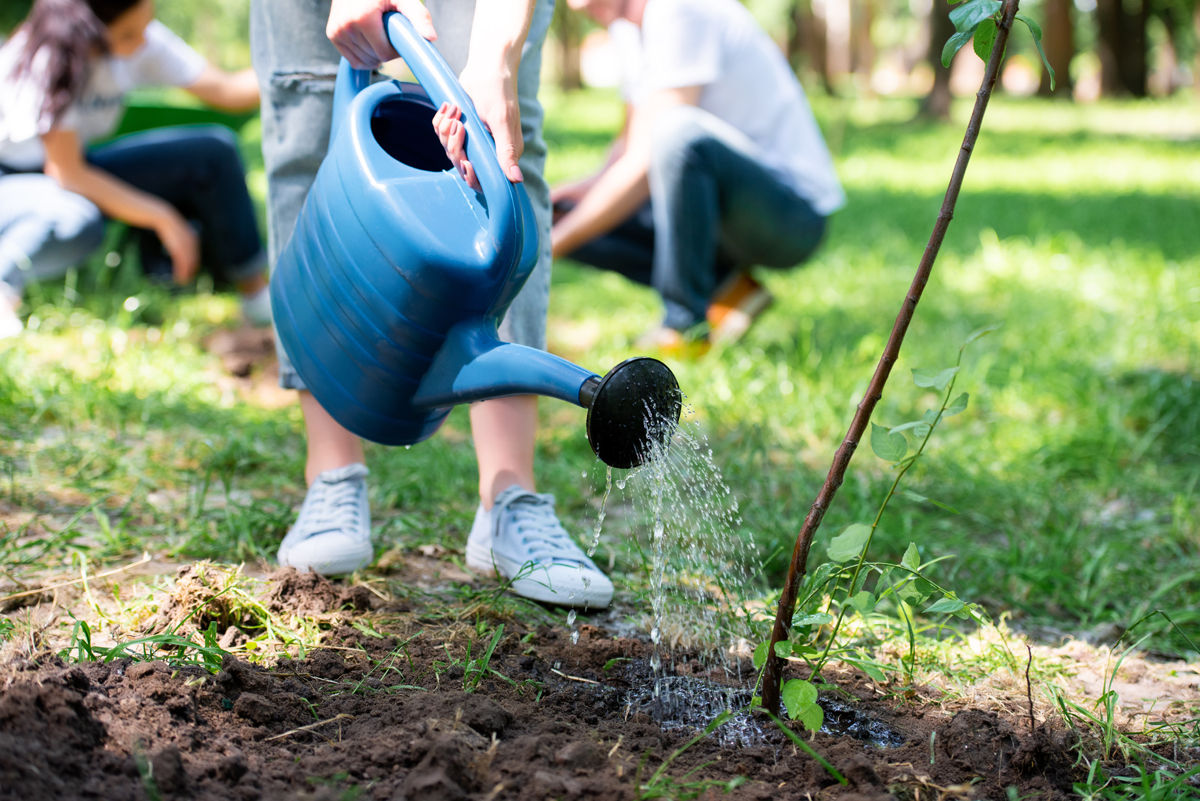



When cutting down a tree, safety and technique are everything. Many accidents happen because of simple mistakes. Here’s a list of things you absolutely should NOT do when felling a tree:
🚫 DON’T Do These When Cutting Down a Tree
1. ❌ Don’t Skip Safety Gear
-
ALWAYS wear a helmet, eye protection, ear protection, gloves, chainsaw chaps, and steel-toe boots.
-
A falling branch (called a "widowmaker") can be deadly.
2. ❌ Don’t Cut Alone
-
Always have someone nearby to assist or call for help in case of emergency.
-
Let someone know where you are and what you’re doing.
3. ❌ Don’t Use a Dull Chainsaw
-
A dull saw increases the chance of kickback and puts you at higher risk of losing control.
-
Keep your saw sharp and well-maintained.
4. ❌ Don’t Forget to Plan the Fall Direction
-
Know which way you want the tree to fall and clear that area.
-
Remove anything that might be damaged (cars, fences, power lines, etc.).
5. ❌ Don’t Stand in the Wrong Spot
-
Never stand directly behind or in front of the tree when it begins to fall.
-
Move at a 45° angle away from the fall path, and stay alert.
6. ❌ Don’t Ignore the Tree’s Lean or Dead Branches
-
If the tree is leaning, it may fall in that direction regardless of your cuts.
-
Look for dead limbs or weak spots—these may fall unexpectedly.
7. ❌ Don’t Make Only One Cut
-
Don’t try to chop through the tree with one horizontal cut.
-
Use the proper notch and back cut method:
-
Create a notch (face cut) on the fall side (usually 70°/20% deep).
-
Then make a back cut slightly above the notch on the opposite side.
-
8. ❌ Don’t Forget to Check for Obstructions
-
Power lines, structures, vehicles, fences—clear everything in the fall zone.
-
Trees near buildings or power lines should be handled by pros.
9. ❌ Don’t Cut in High Winds or Bad Weather
-
Wet or windy conditions can cause the tree to fall unpredictably.
-
Wait for calm, dry weather.
10. ❌ Don’t Attempt Large Trees Without Experience
-
Trees taller than 20 feet or near hazards (like power lines) should be handled by certified arborists or tree removal professionals.
✅ Bonus Tip: Inspect the Tree First
-
Check for:
-
Hollow trunks
-
Cracks
-
Rot or fungus at the base
-
Bee/wasp nests or wildlife
-
🌲 Step-by-Step Tree Felling Guide
✅ Before You Begin: Prep & Safety
-
Wear full safety gear
-
Helmet, eye/ear protection, gloves, steel-toe boots, chainsaw chaps
-
-
Inspect the tree
-
Look for lean, rot, cracks, dead branches, or wildlife nests
-
Identify hazards (power lines, structures, vehicles)
-
-
Clear the area
-
Remove debris around the tree base
-
Ensure you have a clear escape path and fall zone (twice the tree height)
-
✂️ Step 1: Plan the Fall Direction
-
Decide where you want the tree to fall (usually in the direction it naturally leans)
-
Clear at least 2 escape paths at 45° angles behind you and away from the fall line
✏️ Step 2: Make the Notch Cut (Face Cut)
This tells the tree where to fall.
-
Side facing fall direction
-
Make 2 cuts:
-
Top cut: Angle downward at 70°
-
Bottom cut: Horizontal to meet the top cut
-
-
The notch should be about 20–25% into the tree's diameter
🪓 Step 3: Make the Back Cut
This releases the tree to fall.
-
Go to the opposite side of the notch
-
Make a horizontal cut slightly above the bottom of the notch
-
DO NOT CUT ALL THE WAY THROUGH — leave a "hinge" of wood (about 10% of the tree's diameter) to control the fall
🏃 Step 4: Retreat Immediately
-
As the tree begins to fall:
-
Shut off or drop the saw safely
-
Retreat along one of the 45° escape paths
-
Keep your eyes on the tree as you move
-
⚠️ Step 5: After the Fall
-
Wait for all motion to stop before approaching the tree
-
Be cautious of:
-
Tensioned limbs or branches
-
“Barber chairing” (a tree splitting vertically due to improper cuts)
-
🧰 Pro Tips:
-
Use wedges to prevent the tree from leaning back and pinching the saw
-
For large, heavy, or leaning trees — hire a professional arborist
More Articles About Arizona Landscaping
- Best Time Of Year To Trim Trees In Arizona
- Can You Grow Lemon Trees In Arizona?
- How To Save A Dying Cactus
- How To Bring A Dead Palm Tree Back To Life
- Cost Of Tree Removal 2020
- How Much Does Cactus Removal Cost?
- How Much Does Palm Tree Trimming Cost?
- How Much Does Palm Tree Removal Cost?
- How Much Does Tree Removal Cost?
- How Much Does Tree Stump Grinding & Removal Cost?
- How To Trim A Tree
- How To Choose a Tree Service
- WHY TOPPING HURTS TREES
- How To Show Your Trees You Love Them
- Fast Growing Trees of Arizona
- When & How to Trim Citrus Trees in Arizona
- Preparing Arizona Trees For Monsoon Storms
- Arizona Ash Trees
- Mesquite Trees In Arizona
In Arizona, the cost of trimming a mesquite tree in 2025 varies based on factors like tree size, condition, and location. Here's a breakdown to guide your budgeting:
💰 Estimated Mesquite Tree Trimming Costs in Arizona (2025)
-
Small Trees (under 15 feet): $100 – $240
-
Medium Trees (15–25 feet): $275 – $475
-
Large Trees (25+ feet): $600 – $800
These estimates can vary depending on the specific region in Arizona and the complexity of the trimming required.
🛠️ Factors Influencing Trimming Costs
-
Tree Size & Height: Larger trees require more labor and equipment.
-
Tree Condition: Overgrown or diseased trees may need more extensive work.
-
Accessibility: Trees near structures or power lines can increase costs due to the need for specialized equipment or safety measures.
-
Service Provider Rates: Prices can vary between companies and regions within Arizona.
📍 Regional Cost Variations
-
Phoenix Area: Average costs range from $386 to $574 per tree, depending on size and complexity.
-
Scottsdale: Small tree trimming costs around $100–$240.
-
Tucson: Costs are comparable to other regions, but it's advisable to get local estimates for accuracy.
📅 Optimal Trimming Time
The best time to trim mesquite trees is in late winter or early spring, before new growth begins. This timing helps maintain tree health and reduces stress.
Tips for Hiring a Tree Trimming Service
Here are some key tips for hiring a reliable and qualified tree trimming service:
✅ 1. Verify Licensing and Insurance
-
Make sure the company is licensed to operate in your state.
-
Ask for proof of liability insurance and workers’ compensation—this protects you if damage or injury occurs on your property.
✅ 2. Check Credentials and Experience
-
Look for companies with certified arborists (ISA-certified preferred).
-
Ask how long they've been in business and if they have experience specifically with mesquite or desert trees.
✅ 3. Ask for References or Reviews
-
Check platforms like Google, Yelp, or Better Business Bureau.
-
Request references from previous customers, especially for similar jobs.
✅ 4. Get Multiple Quotes
-
Obtain at least 2–3 estimates to compare prices and services offered.
-
Be wary of unusually low quotes—they may cut corners or lack proper coverage.
✅ 5. Clarify Services Included
-
Make sure the quote includes:
-
Debris removal
-
Hauling or chipping
-
Disposal fees
-
-
Ask if there's an extra charge for emergency work or difficult access.
✅ 6. Avoid Topping or Over-Pruning
-
A reputable arborist will avoid harmful practices like "topping," which can damage or kill the tree.
-
Ask about their pruning methods to ensure they follow proper tree health standards.
✅ 7. Get It in Writing
-
Always get a written estimate or contract that includes:
-
Scope of work
-
Estimated timeline
-
Total cost
-
Cleanup details
-
Any warranties or guarantees
-
✅ 8. Ask About Equipment and Safety Practices
-
Ensure they use well-maintained equipment and follow OSHA safety standards.
-
For large or risky jobs, confirm that crew members use harnesses, helmets, and safety lines.
Liberty Tree Care Offers Tree Services in Scottsdale, Mesa & Tempe
If you are searching for tree service in Scottsdale, Mesa or Tempe, Liberty Tree Experts can help! Get a free tree service quote by giving Liberty a call today at 480-482-9374.
 Below, we have outlined 7 things you should never do when cutting a tree.
Below, we have outlined 7 things you should never do when cutting a tree.
1. Never Cut A Tree Down By Yourself
You will undoubtedly need a helper or two when attempting to cut down a tree. Working on this task with multiple people will help to make the job easier and safer, overall. Each person involved in the process can handle a different role. For instance, one person can cut through the trunk while another person can trim the branches.2. Do Not Use A Chainsaw Without Experience
Do not even attempt to cut a tree if you do not have any prior experience using a chainsaw. Chainsaws are powerful tools that can be very dangerous when used by inexperienced individuals.3. Do Not Top The Tree
Topping the tree can ultimately destroy its stability and natural shape. This will make the tree more susceptible to high winds and stormy conditions. Leave the tree pruning to the professionals at all times.4. Do Not Cut Branches That Are Bigger Than Your Arms
Do not attempt to cut any branches that are bigger than your arms. Doing so could result in serious injuries. Large branches are quite difficult to handle and can possibly damage the surrounding areas.5. Do Not Stand Under The Tree While It Is Being Cut
Ensure that nobody is standing beneath the tree while it is being cut down. Stand either to the side or walk away from the tree entire to ensure safety. Always be mindful of everyone's location when cutting down a tree.6. Refrain From Cutting The Tree Trunk Too Close To The Ground
When the tree's trunk is cut very close to the ground, significant damage can be done. Implement the 25% rule where the roots should never be cut beyond 25% of the total volume of the tree. It can be quite dangerous when a tree is cut too close to the ground. The tree's weight can be too much, resulting in damage to the surrounding area.7. Never Leave The Stump In The Ground
Always remove the entire stump in order to avoid any rot and decay. This will help keep your property clean and in the best shape possible.Liberty Tree Care Offers Tree Services in Scottsdale, Mesa & Tempe
If you are searching for tree service in Scottsdale, Mesa or Tempe, Liberty Tree Experts can help! Get a free tree service quote by giving Liberty a call today at 480-482-9374.More Articles About Arizona Landscaping
- Best Time Of Year To Trim Trees In Arizona
- Can You Grow Lemon Trees In Arizona?
- How To Save A Dying Cactus
- How To Bring A Dead Palm Tree Back To Life
- Cost Of Tree Removal 2020
- How Much Does Cactus Removal Cost?
- How Much Does Palm Tree Trimming Cost?
- How Much Does Palm Tree Removal Cost?
- How Much Does Tree Removal Cost?
- How Much Does Tree Stump Grinding & Removal Cost?
- How To Trim A Tree
- How To Choose a Tree Service
- WHY TOPPING HURTS TREES
- How To Show Your Trees You Love Them
- Fast Growing Trees of Arizona
- When & How to Trim Citrus Trees in Arizona
- Preparing Arizona Trees For Monsoon Storms
- Arizona Ash Trees
- Mesquite Trees In Arizona

 Gardeners and landscapers across the state of Arizona depend on low-maintenance plants that can thrive with very little care. If you are looking for the best low-maintenance plants under the Arizona sun, we've highlighted some of our favorites below.
Gardeners and landscapers across the state of Arizona depend on low-maintenance plants that can thrive with very little care. If you are looking for the best low-maintenance plants under the Arizona sun, we've highlighted some of our favorites below.
Dalea
These are a diverse group of plants that can survive and thrive the extreme Arizona summers. There are nearly 200 Dalea species, which includes both trees and shrubs. The pea-shaped flowers can come in three different colors, including yellow, purple and rose.Sugar Bush Rhus Ovata
Growing to an average of 3-4-feet tall, the Rhus Ovata features green leaves with a hint of red around the edges. During the fall seasons, the leaves will turn a beautiful shade of red/orange. At this time, the plant will also produce small yellow flowers.Little Leaf Cordia Cordia Parvifolia
This small and shrubby tree can grow as high as 6-feet tall. It features a broad, rounded canopy that will bloom white flowers during the spring. The bark is typically brown colored, with small and pointed leaves.Feathery Cassia Cassia Nemophila
This is an evergreen shrub that grows rather quickly. This plant loves when direct sunlight touches its needle-like leaves. This shrub can also flower, growing round yellow clusters near the ends of the branches.Eremophila
Straight from the semi-arid to arid regions of Australia, this is considered a group of evergreen plants. The emu bushes grow in several different soil types, with the ability to survive for long periods of time without water.Chihuahuan Sage Leucophyllum Laevigatum
This low-maintenance plant can thrive in the extreme Arizona climate. This features small leaves, producing lots of purple flowers over time. These shrubs can grow as high as 4 feet and as wide as 5 feet.Liberty Tree Care Offers Tree Services in Scottsdale, Mesa & Tempe
If you are searching for tree service in Scottsdale, Mesa or Tempe, Liberty Tree Experts can help! Get a free tree service quote by giving Liberty a call today at 480-482-9374.
 Watering trees in Arizona's arid climate requires careful attention to ensure their health and longevity. Here are some practical tips:
Watering trees in Arizona's arid climate requires careful attention to ensure their health and longevity. Here are some practical tips:
1. Understand Tree Watering Needs
- Young Trees: Newly planted trees need more frequent watering (every 2-3 days initially, tapering to once a week after a few months).
- Established Trees: Mature trees can thrive with deep watering every 2-4 weeks, depending on the season.
2. Water Deeply and Infrequently
- Focus on deep watering to encourage deep root growth. Water should penetrate 2-3 feet into the soil, which is where most tree roots grow.
- Avoid shallow, frequent watering, as it promotes surface roots that are more vulnerable to heat and drought.
3. Water at the Drip Line
- The “drip line” is the outer edge of the tree canopy. Water here rather than near the trunk to target the area where feeder roots absorb water most effectively.
4. Water Early in the Morning or Late Evening
- Watering during cooler times of the day reduces evaporation and ensures more water reaches the roots.
5. Adjust for Seasons
- Summer (May–September): Water more frequently, but still deeply.
- Winter (October–April): Reduce watering frequency, as trees are less active during cooler months.
6. Monitor Soil Moisture
- Check soil moisture 12-24 inches deep using a soil probe or screwdriver. If it’s dry at that depth, it’s time to water.
7. Use Mulch
- Apply a 2-4 inch layer of mulch around the base of the tree (but not touching the trunk) to retain soil moisture and reduce temperature fluctuations.
8. Use Efficient Irrigation Methods
- Drip irrigation or soaker hoses are ideal for slow, deep watering.
- If using a garden hose, let it run slowly to ensure deep penetration without runoff.
9. Choose Native or Drought-Resistant Trees
- Native or desert-adapted trees like Palo Verde, Mesquite, or Ironwood require less water once established.
10. Look for Signs of Overwatering or Underwatering
- Overwatering: Yellowing leaves, standing water, or soggy soil.
- Underwatering: Wilting, browning leaves, or dry, cracked soil.
Liberty Tree Care Offers Tree Services in Scottsdale, Mesa & Tempe
If you are searching for tree service in Scottsdale, Mesa or Tempe, Liberty Tree Experts can help! Get a free tree service quote by giving Liberty a call today at 480-482-9374.
 Arizona summers come with extreme heat and daily sunshine. So, how can you give your yard and home an escape from the non-stop sunshine?
If you are currently searching for "best arizona shade trees that dont shed", this article is for you! Consider planting some of the following shade trees that will save you from constantly cleaning and skimming.
Arizona summers come with extreme heat and daily sunshine. So, how can you give your yard and home an escape from the non-stop sunshine?
If you are currently searching for "best arizona shade trees that dont shed", this article is for you! Consider planting some of the following shade trees that will save you from constantly cleaning and skimming.
Palo Verde
Palo Verde trees can be seen all across the valley and they stand out due to how green they appear throughout the year. Every part of the tree is green, from the trunk all the way up to the branches. Another pro is the fact that these trees are some of the most drought-tolerant plants in the desert. Palo Verdes need no supplemental water supply to live and flourish. If any extreme drought occurs, the leaves can be shed, but they are extremely small, so the workload will not be overwhelming to any homeowners.Arizona Cypress
This drought-tolerant cypress tree is native to the southwestern U.S. so it is very used to surviving the hot Arizona summers. This tree is commonly chosen by homeowners for various reasons. The Cypress tree does not shed a lot, it provides shade, breaks up wind patterns and it can also be used as a Christmas tree. Growing approximately 18 inches per year, the Cypress can reach heights up to 50-feet tall. Direct sunlight for at least six hours a day will suffice.Arizona Rosewood
Enjoy the beauty provided by trees in your backyard but are tired of skimming the pool for leaves? The Arizona Rosewood serves the best of both worlds. The Rosewood will not grow too large, so you'll never have to worry about it growing over property lines. Reaching a height of about 10 feet, the Rosewood will also provide a present in the spring season: growing small white flowers.Willow Acacia
The Willow Acacia is an Australian tree that has made a home providing shade in southern Arizona. This tree tends to grow fast and narrow, perfect for homeowners without a ton of space in their yard. Willows will grow to a maximum height of 30 feet, and just like Rosewoods they will produce beautiful flowers in the spring.Ironwood
Ironwood trees grow exclusively in the Sonoran Desert, so these plants know how to flourish in Arizona. In fact, these trees are some of the oldest found in the desert, surviving for the last 1,200 years! Lavender flowers will spring from the trees as soon as the weather warms up. They can stand anywhere from 25 - 45-feet tall.Liberty Tree Care Offers Tree Services in Scottsdale, Mesa & Tempe
If you are searching for tree service in Scottsdale, Mesa or Tempe, Liberty Tree Experts can help! Get a free tree service quote by giving Liberty a call today at 480-482-9374.More Articles About Arizona Landscaping
- Best Time Of Year To Trim Trees In Arizona
- Can You Grow Lemon Trees In Arizona?
- How To Save A Dying Cactus
- How To Bring A Dead Palm Tree Back To Life
- Cost Of Tree Removal 2020
- How Much Does Cactus Removal Cost?
- How Much Does Palm Tree Trimming Cost?
- How Much Does Palm Tree Removal Cost?
- How Much Does Tree Removal Cost?
- How Much Does Tree Stump Grinding & Removal Cost?
- How To Trim A Tree
- How To Choose a Tree Service
- WHY TOPPING HURTS TREES
- How To Show Your Trees You Love Them
- Fast Growing Trees of Arizona
- When & How to Trim Citrus Trees in Arizona
- Preparing Arizona Trees For Monsoon Storms
- Arizona Ash Trees
- Mesquite Trees In Arizona
